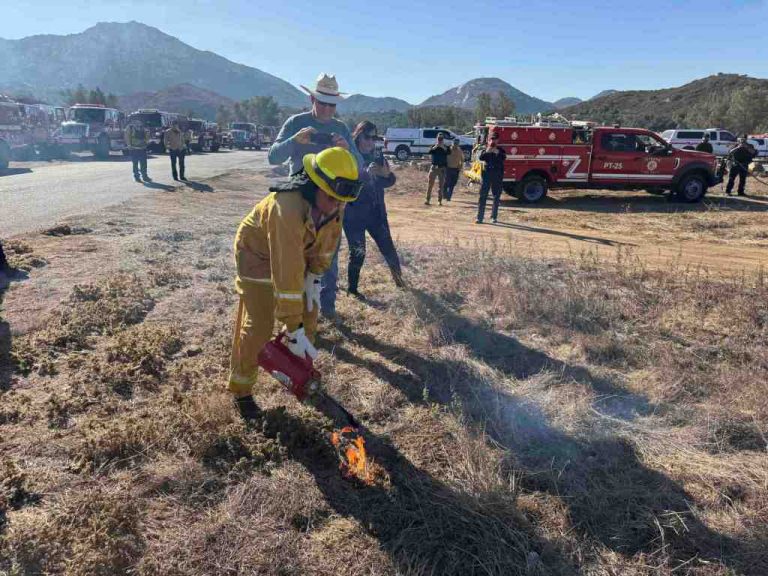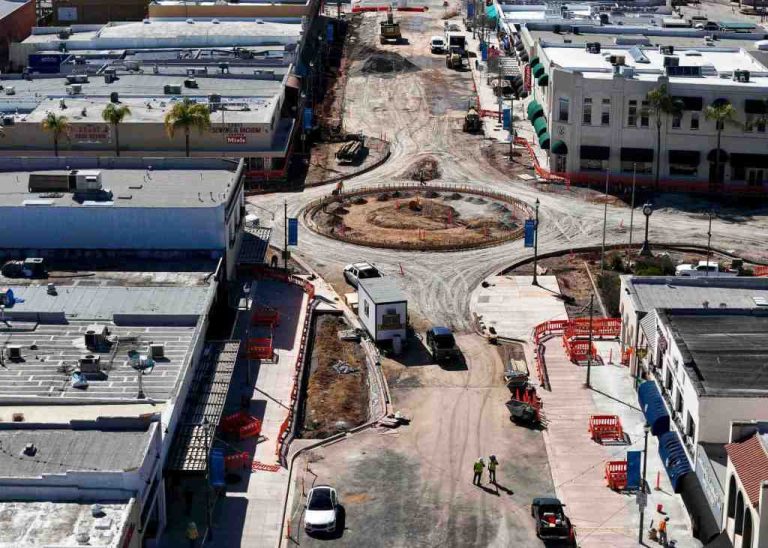
San Diego’s nine city reservoirs have already captured enough rain water since the beginning of the year to serve all of the city’s 1.4 million water customers for 56 days with no imported water, a spokesperson said Wednesday.
The amount of rain collected this winter and last is so much higher than normal that San Diego is on track to have local water make up a full 25 percent of the city’s water supply this year — more than double the usual 10 percent.
Collectively, the city’s nine reservoirs have 42 percent more water than they did two years ago, on March 28, 2022, said the spokesperson, Arian Collins.
And the National Weather Service is predicting much more rain this weekend.
The 40 thousand acre feet of water — equivalent to 13 billion gallons — captured since Jan. 1 is far more than the usual amount captured. The city usually captures about 23 thousand acre feet of water in an entire year.

Boaters cruise around submerged trees in Lower Otay Lake on Wednesday.
(Meg McLaughlin/The San Diego Union-Tribune)
San Diego could have captured even more rain the last two winters if some of its reservoirs, many of which are outside the city limits, were not forced by the state to limit their capacity based on structural concerns.
Lake Murray was recently added to the list of city dams that must be kept below their maximum volume, joining Lake Hodges, Lake Morena and El Capitan Reservoir.
San Diego’s dams are among the oldest in the state. State officials recently deemed Hodges “unsatisfactory” and have rated three others as being in “poor” condition — Morena, El Capitan and Lower Otay.
Murray and Barrett got ratings of “fair,” while San Vicente, Miramar and Sutherland were rated “satisfactory.”
San Diego announced last fall that it is is accelerating efforts to shore up the aging dams, including moving up construction of the new Lake Hodges Dam from 2031 to 2029 and committing to comprehensively evaluating the eight other city dams by 2028.






